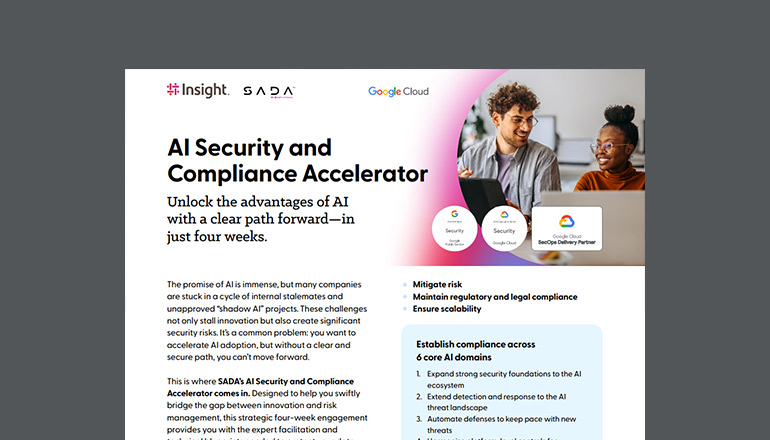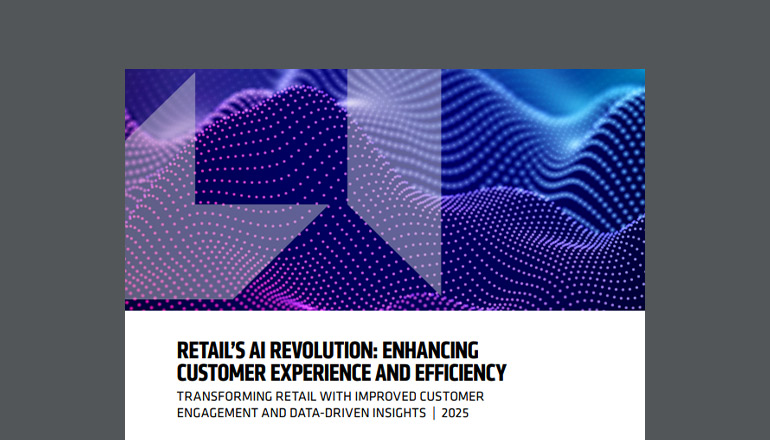Article How Automation is Transforming the Retail Experience
Automation is the next step in retail’s digital evolution. In this article, we’ll explore a variety of ways automation impacts retail processes and how to adopt automated solutions within your retail environment.
By Insight Editor / 18 Dec 2021 / Topics: Artificial Intelligence (AI) Automation Digital transformation Endpoint management

In the wake of the COVID-19 pandemic, the retail industry is growing faster than it has at any point in the past 15 years. In 2020, retail sales grew an estimated 6.7% — much higher than the five-year average of 4.4%. As retail sales continue to surge, businesses need to adapt to this massive growth.
After 2020 and 2021, retailers have emerged stronger by embracing new technologies and digital processes. Automation in particular is a key component of retail’s transformation. Retail companies with automated operations have improved inventory management, optimized staffing, forecasted sales and delivered a better customer experience. Here are some high-impact ways that retail businesses can integrate automation into their environment.
Inventory management
Inventory management is crucial to growing a retail business. Too little stock can lead to a failure to meet customer demands, while too much runs the risk of items expiring or becoming out of step with consumer trends.
Automation can provide visibility into inventory, show trends in customer behavior, forecast seasonal or monthly inventory, and keep track of sales. With automation added to the inventory management process, companies can reduce product loss, boost sales and improve customer experiences.
Accounting and bookkeeping
The next evolution in retail automation? The accounting process. Modern software allows accountants and finance teams to automate slow and tedious tasks, giving them time to focus on more critical efforts. With the right software, retailers can avoid tedious data entry and the need for complex spreadsheets.
The benefits of accounting automation include time savings, improved productivity for accountants, more accurate data, faster data retrieval and secure storage. These improvements help companies avoid costly errors and give their finance teams time back in their day.
Predictive analysis, reporting and forecasting
One aspect of retail automation that improves the customer experience is predictive analysis. This type of data analysis enables companies to forecast upcoming sales and prevent possible product shortages. Predictive data can also add personalization to the customer experience by anticipating hot items and trends. And, companies can create reports that offer deeper insights into opportunities to boost customer engagement and satisfaction.
Post-pandemic, 70% of consumers expect elevated digital capabilities from their retail providers. For example, Netflix offers viewers personalized suggestions based on previous movies and shows they’ve watched. This creates a more personalized experience for viewers and sets them apart from competitors.
Purchasing, delivery and order tracking
With more customers expecting expediency, automation in the purchase, delivery and tracking process lets retailers remain transparent with customers and improve efficiency. Order tracking builds trust, boosts loyalty and helps retailers gain visibility into the shipping process.
Fulfillment automation offers an opportunity to both support internal teams and build trust and loyalty with customers. Shipping automations also take the burden off your team’s shoulders by eliminating or simplifying repetitive, menial tasks. Overall, enabling automation in this area can deliver a noticeable impact on business growth.
Automate with Insight.
When stores have complete visibility into operations, they’re able to streamline operations, monitor store conditions, get real-time inventory alerts, gather and report with data, and free their workforce to focus on customer-driven tasks.
While adopting new solutions can be daunting, you don’t have to navigate retail modernization alone. With a team of Insight experts on your side, it’s easy to leverage cutting-edge retail technology solutions. Harness the power of automation to grow your business and create unique consumer experiences.







